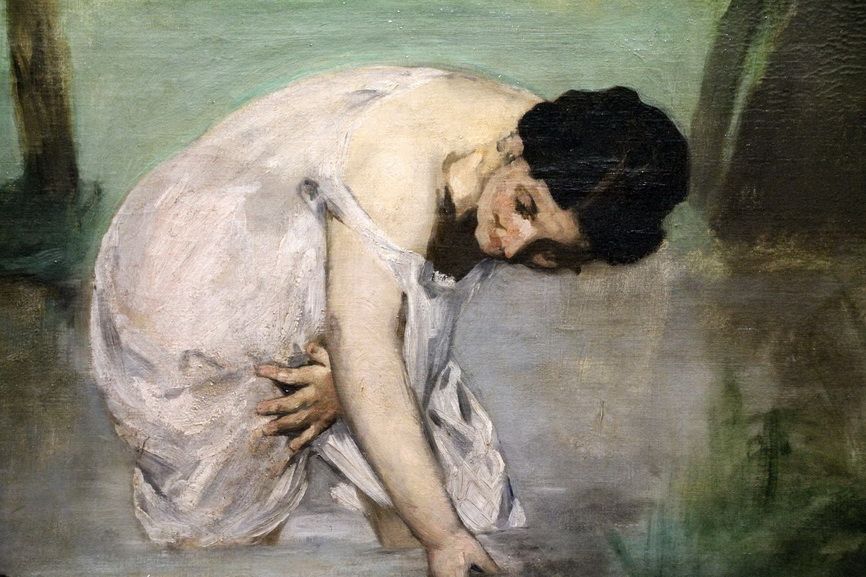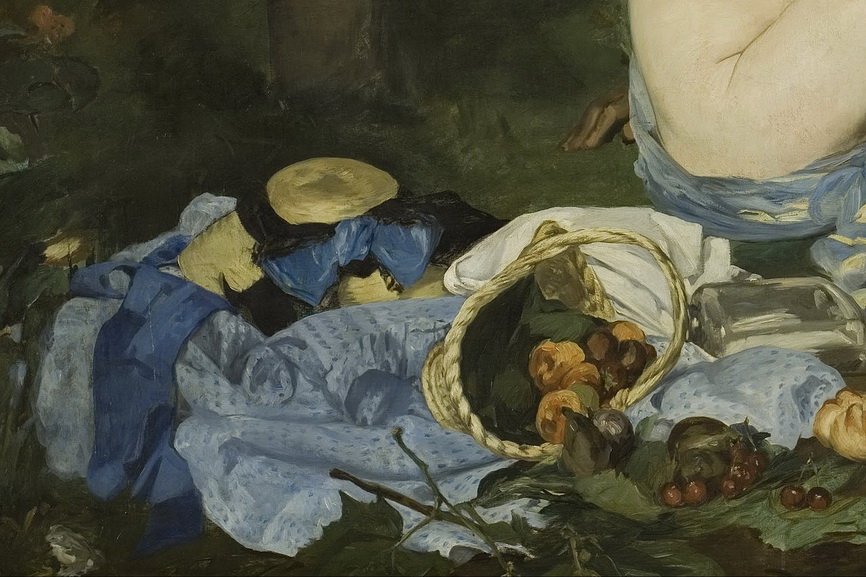The Everlasting Mystery of Le Déjeuner sur l'Herbe by Édouard Manet
Modern art history is saturated with the paintings that changed the way we perceive the society, e.g. the inherited roles and modes of behavior. Nevertheless, some of them were radical for their time and even today they cause quite a stir. The perfect example of such a chiseling masterpiece is Le Déjeuner sur l'herbe or The Luncheon on the Grass by Édouard Manet.
This astonishing composition introduced an entirely new painterly approach, since it encompassed the genres of portraiture, landscape and still life within a single painting. Namely, it features a female nude on a picnic with two fully dressed men in a rural setting and a bather in the background. Manet produced this controversial work in-between 1862 and 1863 and was rejected by the notorious Paris Salon jury, so the artist displayed it at Salon des Refusés instead.
The rest of the text will focus on the immense influence it made on upcoming artists and the social revolt it caused for quite a long time. This outstanding painting is on permanent display at the Musée d'Orsay in Paris, while an earlier, petite version can be seen at the Courtauld Gallery in London.
Édouard Manet - Le Déjeuner sur l'herbe, 1869
The Prolific Figures of Le Déjeuner sur l'herbe Painting by Manet
The leading figure of the Le Déjeuner sur l'herbe painting is a nude woman who stares directly at the viewer while the two men, fashionably dressed, are caught in conversation. The three figures are complemented by a still life in a lower left plane of the canvas consisting of a basket of fruit, a round loaf of bread and the woman's clothes. In the background, the second woman bathes in a stream and her presence is almost ghostly and surreal due to her size (this figure is too large in comparison with the trio in the foreground). The overall impression is that the scene took place in a studio, since the light is low, there are no shadows, and the background lacks depth.
This masterpiece was actually personal for Édouard Manet, and there are several proofs for such a claim. Namely, the landscape represented in the painting resembles the l’île Saint-Ouen, on the outskirts of Paris near the artist’s family estate. The figures on all of his paintings were inspired by the real models and people he knew; the female nude is thought to be Victorine Meurent, Manet’s favorite and frequently portrayed model (who also posed for his iconic painting Olympia), while the male figure on the right is believed to be based on a combination of Eugène and Gustave, Manet's two brothers. The other man is based on his brother-in-law, Dutch sculptor Ferdinand Leenhoff; therefore, some scholars even refer to Le Dejeuner sur l’Herbe as Manet’s family portrait.

The Indecent Public Behavior
The painting caused quite a shock after it was displayed for the first time and was considered indecent and vulgar, although Manet's contemporary and established writer and critic Émile Zola defended the work.
As a matter of fact, what was so outrageous was a form of sexual tension and strange interaction, or rather the lack of it, between the three main subjects in the foreground and the bather in the background. The female nude seems distant and somehow alienated from two male figures. There are various contradictions present on the painting – the feminine against the masculine principle, the naked versus the clothed, and the white color palette versus the dark color palette. However, the main difference between the men and women is their class.
The other thing which troubled the viewers is the nude woman’s gaze. It was and still is hard to tell whether she is inviting or challenging the viewer, or she is presenting herself proudly in flesh and equally with man.
According to one interpretation, the painting displays a common sex work routine typical for the Bois de Boulogne, a large park on the western outskirts of Paris. Although sex work was an important aspect of the Parisian society, it was considered a taboo and was an undesirable motif to be represented on a painting.
Although Le Déjeuner sur l’herbe was rejected from the Paris Salon and provoked a number of reviews and responses after it was first displayed, not all of those analyzes were necessarily negative.
Albert de La Fizelière, a notable art critic and a contributor for Le Petit Journal, thought that colors of the piece represented the countryside into the salon, yet the painting was according to him underdeveloped. A contributor for Le Figaro Arthur Stevens, on the other hand, underlined Manet’s talent for color, yet he was not pleased with the form and the models.

The Cultural Significance of Édouard Manet's Le Déjeuner sur l'herbe
The Le Déjeuner sur l'herbe masterpiece was quite mysterious for a very long time and some details are still unclear. There are various speculations and one of them questions Manet’s authorship. Interestingly so, the painting remained in the artist’s possession until 1878 when opera-singer and collector, Jean-Baptiste Faure bought it.
Over the upcoming decades, there were many artists who produced their works influenced by Le Déjeuner sur l'herbe. In 1870, French painter James Tissot produced his work La Partie Carrée which is a less ‘’vulgar’’ representation of the same luncheon motif. In-between 1949 and 1962, Picasso was so inspired by the Le Déjeuner that he managed to produce a large number of works - paintings, drawing, graphic works and cardboard models for sculptures, while in 1944 a parody of Le Déjeuner sur l'herbe was painted by Max Ernst.
The cultural impact of Monet’s artworks goes beyond visual arts; renowned French filmmaker Jean Renoir shot a movie in 1959 inspired by it, while the UK new wave band Bow Wow Wow did a controversial cover photo for their 1981 album See Jungle! See Jungle! Go Join Your Gang Yeah, City All Over! Go Ape Crazy! on the basis of the painting.
After all of these examples, the mentioned details about the composition and its social status tell much about how Le Déjeuner sur l'herbe moved through time as a masterpiece of huge relevance and mystery. Even today after various social fights and emancipation in regards to the display of nude body, it would be hard to imagine that the situation displayed on a 19th-century painting would be less controversial in any public space around the globe. Maybe people would ignore it, yet it would definitely trigger some form of social revolt and perhaps an action by the authorities, which reflects the status of human freedom in the contemporary world and suggest why this extraordinary Manet's painting is still relevant today.
Editors’ Tip: Manet's 'Le Déjeuner sur l'herbe' (Masterpieces of Western Painting)
Édouard Manet's controversial painting Le Déjeuner sur l'herbe is one of the best known images in French art. The subject of critical analysis for more than a century, it still defies singular interpretations. These essays, written specially for this volume by the leading scholars of French modern art, therefore offer six different readings of the painting, incorporating close examinations of its radical style and novel subject, relevant historical developments and archival material, as well as biographical evidence that prompts psychological inquiries.
Featured images: Edouard Manet - Luncheon on the Grass, detail, 1863. Image creative commons; Edouard Manet - Luncheon on the Grass, 1863. Captions, via Creative Commons
Can We Help?
Have a question or a technical issue? Want to learn more about our services to art dealers? Let us know and you'll hear from us within the next 24 hours.

